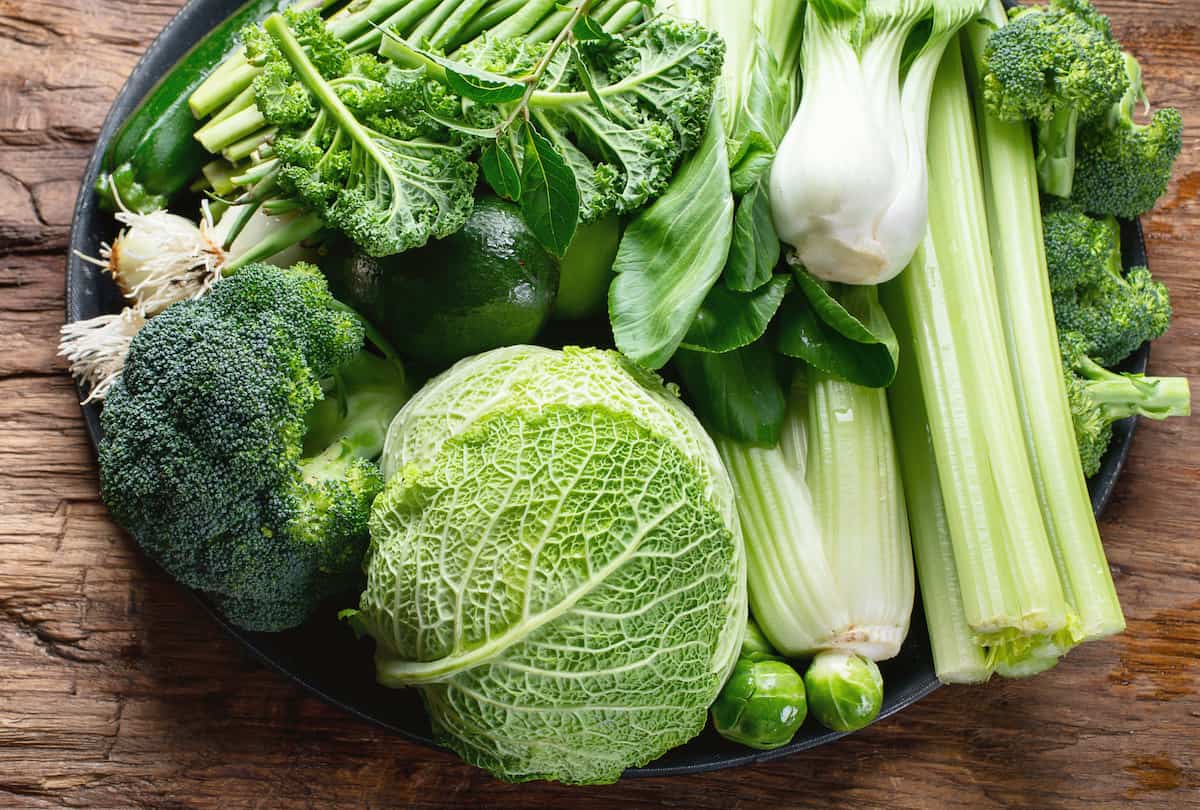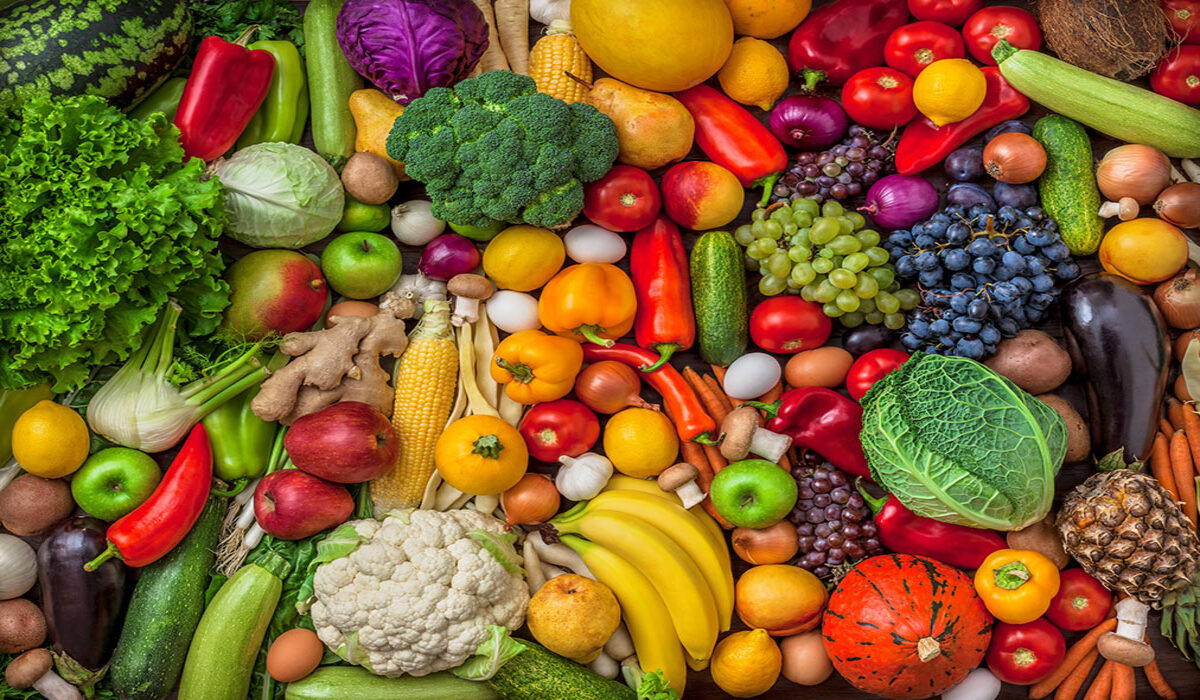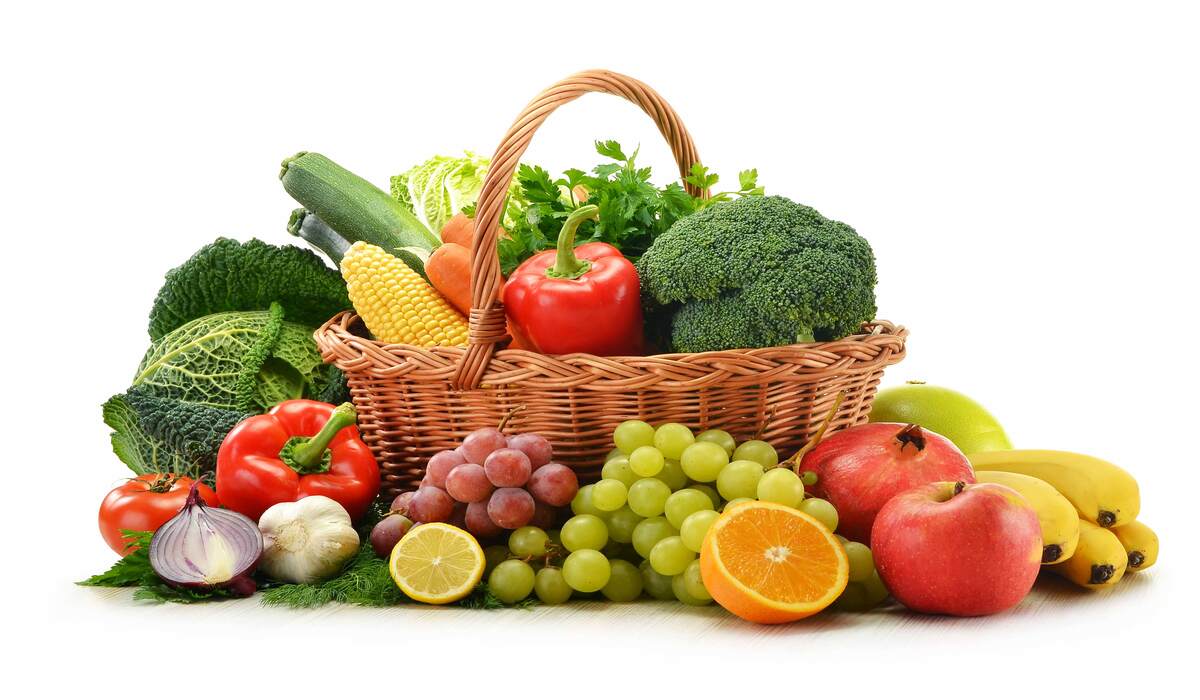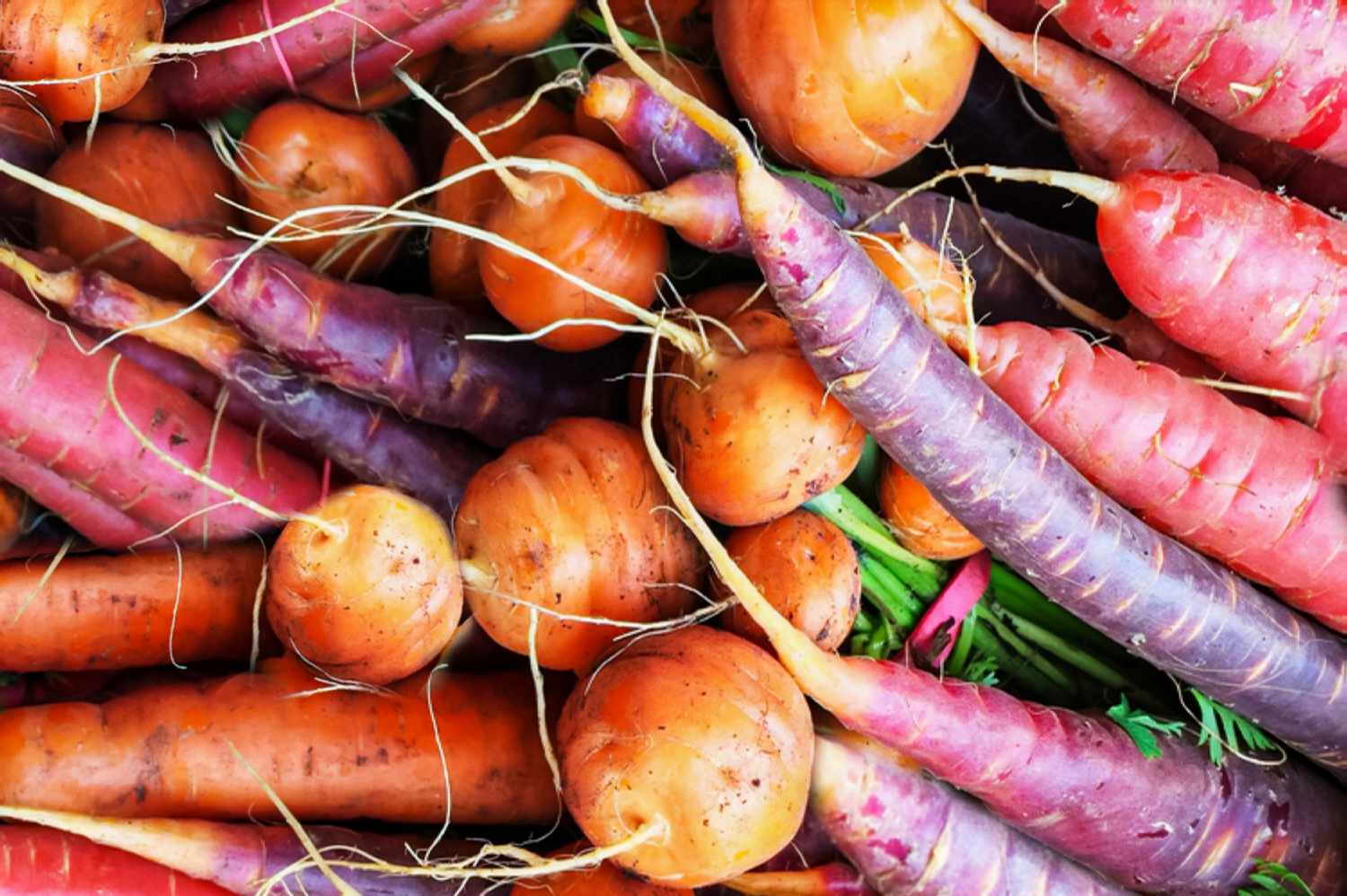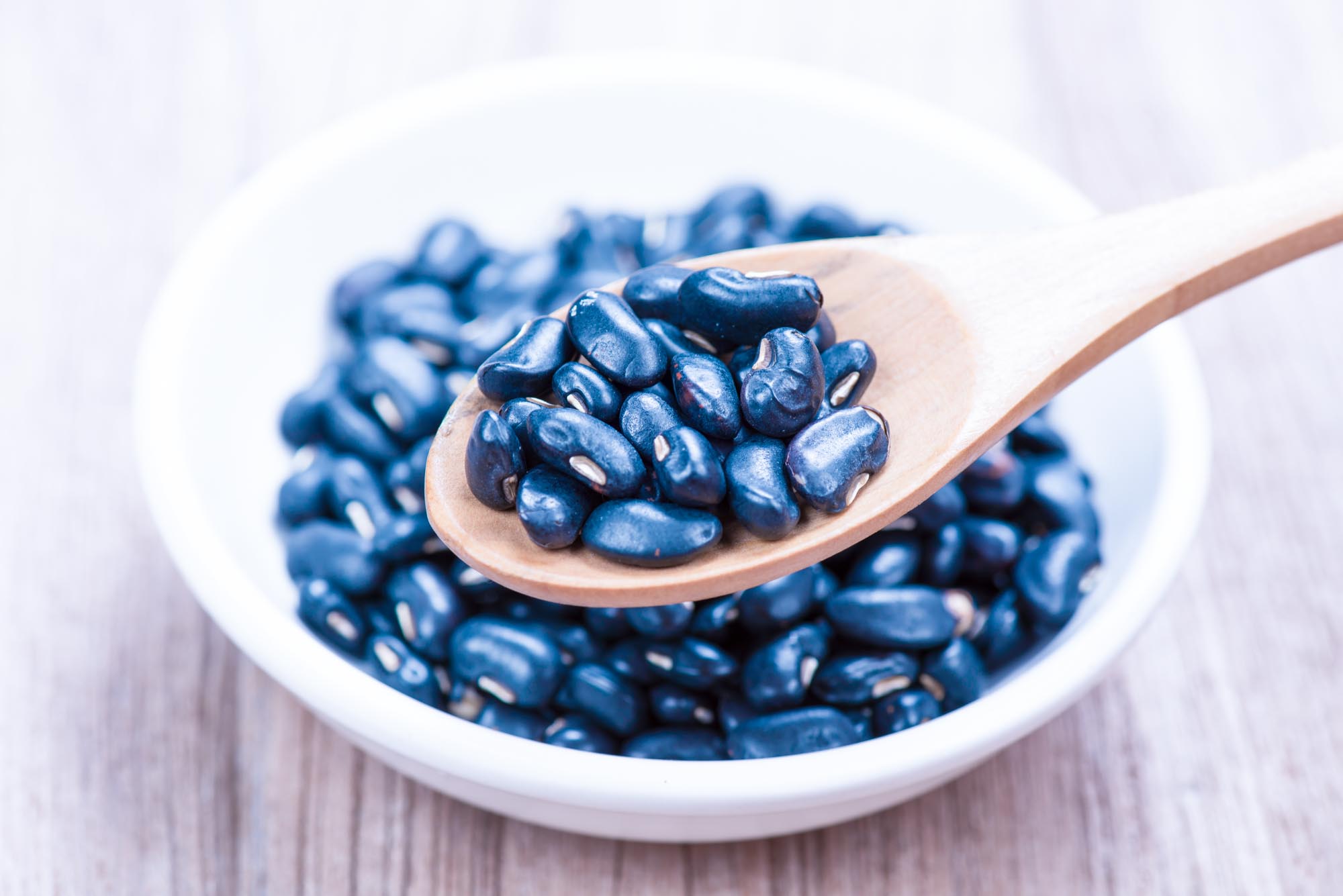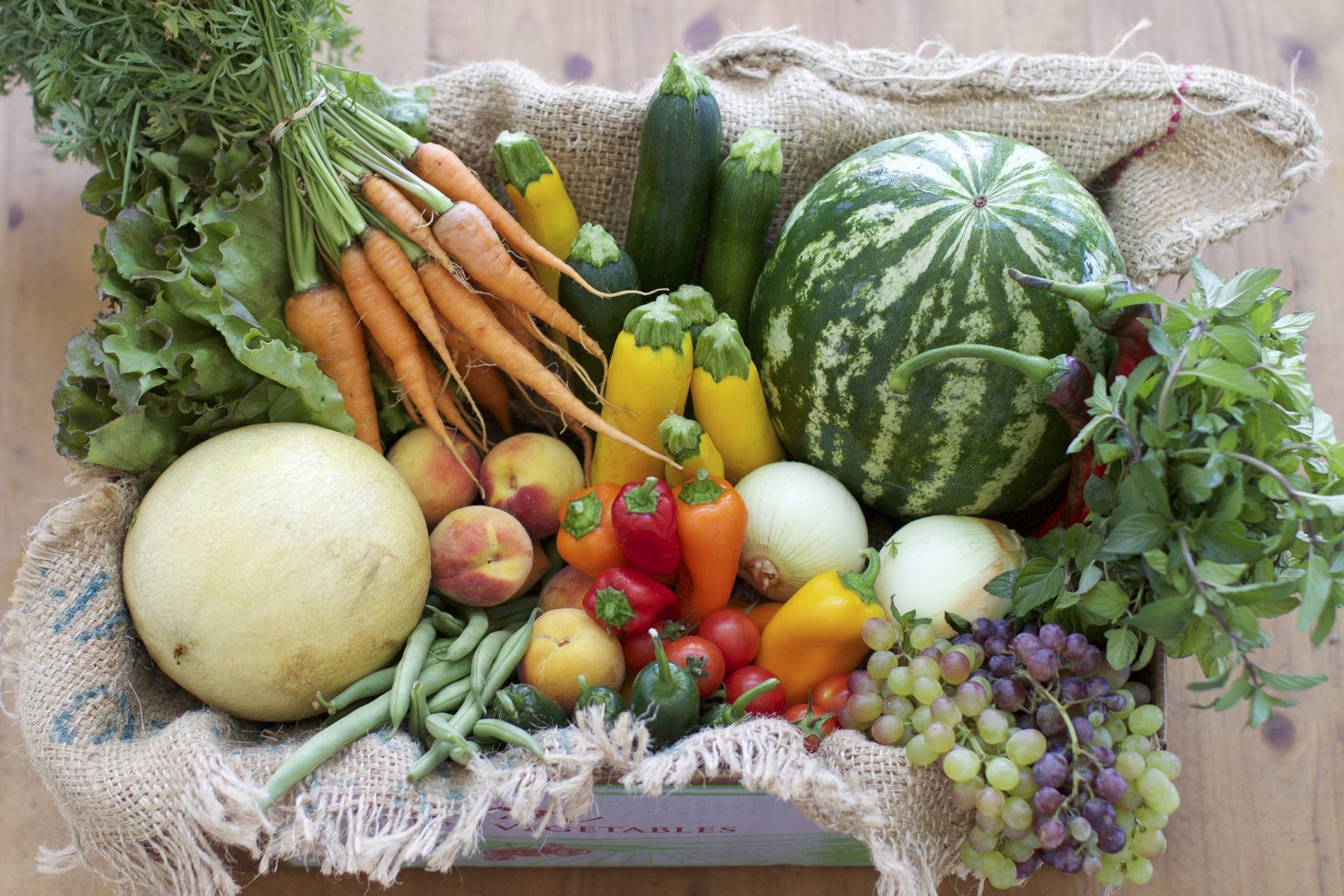Home>Types of Gardening>Edible Gardening>What Are Man-Made Vegetables


Edible Gardening
What Are Man-Made Vegetables
Modified: January 22, 2024
Learn about man-made vegetables and how to grow them with edible gardening. Discover the benefits of cultivating these unique plants for a fresh and sustainable food source.
(Many of the links in this article redirect to a specific reviewed product. Your purchase of these products through affiliate links helps to generate commission for Chicagolandgardening.com, at no extra cost. Learn more)
Table of Contents
Introduction
Welcome to the world of edible gardening! Whether you have a green thumb or are just starting out, growing your own vegetables can be a rewarding and fulfilling experience. While most people are familiar with traditional garden-grown vegetables, there is another category of produce known as man-made vegetables that are gaining popularity in recent years.
Now, you might be wondering what exactly man-made vegetables are. Don’t worry, you’re not alone! In this article, we’ll explore the definition, benefits, types, and process of creating man-made vegetables. We’ll also discuss the popular varieties available and some potential concerns surrounding their usage.
But first, let’s understand what sets man-made vegetables apart from their natural counterparts. Unlike traditional vegetables that grow naturally from seeds, man-made vegetables are created through a combination of scientific methods, such as cross-breeding or genetic modification, to achieve specific traits or characteristics. These methods allow scientists and growers to customize the vegetables to meet specific needs, such as disease-resistance, improved yield, or enhanced nutritional value.
Now you might be wondering, why bother with man-made vegetables when natural vegetables are readily available? Well, there are several benefits to consider. For starters, man-made vegetables can be developed to withstand harsh growing conditions, such as drought or extreme temperatures, allowing them to thrive in areas where traditional varieties struggle to survive. Additionally, they can be tailored to possess higher nutrient content, making them a valuable source of essential vitamins and minerals.
Another advantage of man-made vegetables is their potential to address global food security challenges. With the world population expected to reach nine billion by 2050, the demand for food will skyrocket. Man-made vegetables can play a crucial role in meeting this demand by providing higher yields and more efficient cultivation methods.
So, whether you’re interested in exploring the endless possibilities of edible gardening or are simply curious about the world of man-made vegetables, this article will serve as your comprehensive guide. Let’s dive in and discover the fascinating world of man-made vegetables!
Definition of Man-Made Vegetables
Man-made vegetables, also known as hybrid vegetables or genetically modified vegetables, are plants that have been created through various scientific techniques to produce desired traits or characteristics. These techniques may include cross-breeding different varieties or utilizing genetic engineering to introduce specific genes into the plant’s DNA.
Hybridization, one method of creating man-made vegetables, involves cross-pollinating two different vegetable varieties with desirable traits to produce offspring with a combination of those traits. This process allows for the development of plants that exhibit improved disease resistance, higher yield potential, or enhanced nutritional content.
Genetic engineering, on the other hand, involves modifying the genetic makeup of a plant by introducing or altering specific genes. This method allows for more precise control over the plant’s traits, such as pest resistance, drought tolerance, or prolonged shelf life.
It’s important to note that man-made vegetables are different from genetically modified organisms (GMOs). While GMOs involve the direct manipulation of an organism’s genes, man-made vegetables encompass a broader range of methods, including both traditional hybridization and genetic engineering.
These scientific techniques have revolutionized the agricultural industry, offering growers and consumers a wide array of vegetable varieties with unique characteristics and benefits. However, it’s crucial to consider the potential impact on the environment and human health when it comes to the production and consumption of man-made vegetables.
Now that we’ve established the definition of man-made vegetables and the methods used to create them, let’s explore the many advantages and benefits they offer to growers and consumers alike.
Benefits of Man-Made Vegetables
Man-made vegetables offer a wide range of benefits to both growers and consumers. Here are some of the key advantages:
- Disease Resistance: One of the primary benefits of man-made vegetables is their enhanced resistance to diseases and pests. By cross-breeding or genetically modifying plants, scientists can introduce genes that provide natural defense mechanisms against common pests and diseases. This reduces the need for chemical pesticides, making cultivation more environmentally friendly.
- Improved Yield: Man-made vegetables are often developed to have higher yield potentials compared to their natural counterparts. This means that growers can harvest more produce from the same amount of land, increasing overall productivity and food availability.
- Extended Shelf Life: Some man-made vegetables are designed to have an extended shelf life, allowing them to stay fresh for longer periods. This is achieved by altering the genes responsible for ripening and decay processes. Increased shelf life not only benefits consumers by reducing food waste but also improves the efficiency of food transportation and storage.
- Nutritional Enhancement: Man-made vegetables can be tailored to have higher nutritional value. Scientists can modify the genetic composition of plants to increase the levels of essential vitamins, minerals, and antioxidants. This means that consumers can enjoy vegetables with enhanced nutritional content and potentially improve their overall health and well-being.
- Adaptation to Environmental Challenges: Man-made vegetables can be engineered to withstand challenging environmental conditions such as drought, extreme temperatures, or poor soil quality. This adaptability allows for successful cultivation even in regions where traditional vegetable varieties struggle to grow. This trait is particularly beneficial in areas prone to climate change or facing water scarcity issues.
These benefits make man-made vegetables a valuable resource for both commercial growers and individuals interested in edible gardening. The ability to cultivate crops that are resistant to diseases, have higher yields, and offer improved nutritional content contributes to the sustainability and efficiency of the agricultural industry.
Now that we’ve explored the benefits of man-made vegetables, let’s delve into the different types of man-made vegetables available to growers and consumers.
Types of Man-Made Vegetables
Man-made vegetables come in a variety of types, each offering unique characteristics and benefits. Here are some common categories of man-made vegetables:
- Hybrid Vegetables: Hybrid vegetables are created by cross-breeding two different varieties of the same plant species. This process combines desirable traits from each parent plant, resulting in offspring with improved qualities. For example, a hybrid tomato may exhibit increased disease resistance, larger fruit size, or extended shelf life.
- Genetically Modified Vegetables: Genetically modified (GM) vegetables are created through genetic engineering techniques. Scientists directly alter the genetic makeup of the plants by inserting or modifying specific genes. This allows for precise control over the plant’s traits, such as pest resistance, herbicide tolerance, or enhanced nutritional content.
- Biofortified Vegetables: Biofortified vegetables are developed through traditional breeding or genetic engineering to increase the nutritional content of the plants. These vegetables may have higher levels of essential vitamins, minerals, or antioxidants, providing additional health benefits to consumers. For example, biofortified sweet potatoes can be naturally enriched with vitamin A to combat vitamin A deficiency in regions where it is prevalent.
- Drought-Tolerant Vegetables: With the increasing challenges posed by climate change and water scarcity, drought-tolerant vegetables have become essential. These man-made varieties are specifically engineered to thrive in arid conditions with minimal water requirements. They can help reduce the strain on water resources while ensuring a sustainable food supply.
- Pest-Resistant Vegetables: Man-made vegetables with built-in pest resistance help minimize crop losses due to insect infestations. By integrating genes from naturally pest-resistant plants into susceptible vegetables, scientists can create varieties that ward off common pests without the need for chemical pesticides. This benefits both growers and consumers by promoting sustainable agriculture practices and reducing pesticide residues in food.
Each type of man-made vegetable offers its own advantages and serves different purposes. Growers can choose varieties that best suit their specific needs, whether it’s for increased yield, improved nutritional content, or resilience to challenging environmental conditions.
Now that we’ve explored the types of man-made vegetables available, let’s take a closer look at the process of creating these innovative plant varieties.
Process of Creating Man-Made Vegetables
The process of creating man-made vegetables involves various scientific techniques aimed at manipulating the genetic makeup of plants. These techniques can be divided into two main categories: hybridization and genetic engineering.
Hybridization: Hybridization is a traditional method of creating man-made vegetables by cross-breeding two different varieties of the same plant species. This process involves manually transferring pollen from the flower of one plant to the stigma of another. The resulting offspring, known as hybrids, inherit traits from both parent plants. Breeders carefully select the parent plants based on desired characteristics such as disease resistance, yield potential, or flavor. Over multiple generations, breeders continue to cross-breed and select for specific traits, ultimately stabilizing the desired traits in the hybrid varieties.
Genetic Engineering: Genetic engineering, also known as genetic modification, involves directly manipulating the genetic material of plants by inserting or modifying specific genes. This process allows scientists to introduce desired traits into a plant’s DNA that might not be naturally present in that species. Genetic engineering techniques often involve using specialized tools to isolate and transfer genes from one organism to another. For example, a gene from a bacteria that produces a natural insecticide might be inserted into a vegetable plant, giving it a built-in defense against pests. This precise control over gene manipulation enables scientists to create man-made vegetables with specific traits, such as herbicide tolerance, disease resistance, or enhanced nutritional content.
The process of creating man-made vegetables requires extensive research, experimentation, and testing. Scientists and breeders work to identify and select the most promising plant varieties for hybridization or genetic engineering. They carefully monitor the offspring, assessing their traits and performance, and discard those that do not meet the desired criteria. This process can take several years or even decades to develop stable and commercially viable man-made vegetable varieties.
Once the man-made vegetable varieties are developed, they undergo rigorous testing and evaluation for safety, performance, and compliance with regulatory standards. This includes assessing factors such as nutritional content, allergenicity, and potential environmental impacts. Only after passing these assessments are the man-made vegetable varieties made available to growers and consumers.
The process of creating man-made vegetables is a delicate and precise endeavor that combines scientific knowledge, breeding techniques, and genetic engineering expertise. Through this process, growers and consumers can benefit from innovative vegetable varieties with improved traits, contributing to sustainable agriculture and a more resilient food system.
Now that we understand the process of creating man-made vegetables, let’s explore some of the popular man-made vegetable varieties available today.
Popular Man-Made Vegetable Varieties
The world of man-made vegetables offers a vast array of popular and widely cultivated varieties. These innovative vegetable varieties are sought after for their unique traits, improved qualities, and adaptability to various growing conditions. Here are some of the popular man-made vegetable varieties:
- Roma Tomatoes: Roma tomatoes are a well-known hybrid variety cherished for their meaty texture, rich flavor, and low moisture content. These man-made tomatoes are widely used for sauces, pastes, and canning due to their high yield and firm flesh.
- Gala Apples: Gala apples are a popular hybrid apple variety known for their crisp texture, sweet flavor, and beautiful red and yellow skin. These man-made apples are a result of crossing Golden Delicious and Kidd’s Orange Red apples, combining the best traits of both varieties.
- Broccolini: Broccolini, a cross between broccoli and Chinese kale, is a trendy man-made vegetable variety. It features long, slender stalks topped with small florets, offering a mild, slightly sweet flavor. Broccolini is popular for its tender texture and quick cooking time.
- Honeycrisp Apples: Honeycrisp apples are a beloved hybrid apple variety known for their exceptional crispness, juiciness, and sweet-tart flavor. These apples are prized for their refreshing taste and are popular among apple enthusiasts and consumers alike.
- Seedless Watermelons: Seedless watermelons are a remarkable man-made variety that eliminates the pesky task of removing seeds while enjoying this refreshing fruit. These watermelons are produced through hybridization techniques that result in fruit with very few or no seeds.
- Orange Bell Peppers: Orange bell peppers are a vibrant and flavorful man-made vegetable variety. They are the result of selectively breeding red and yellow pepper varieties to create a unique orange color. These sweet and crunchy peppers are rich in vitamins and add a colorful touch to recipes.
These popular man-made vegetable varieties are just a glimpse into the vast assortment available. Growers and consumers can select from a diverse range of man-made options that offer improved taste, texture, disease resistance, and nutritional content compared to their natural counterparts.
While man-made vegetable varieties provide many benefits, it’s important to address any potential concerns or controversies associated with their production and consumption. Let’s delve into these issues in the next section.
Potential Concerns and Controversies
The production and consumption of man-made vegetables have sparked some concerns and controversies. It’s essential to address these issues to gain a comprehensive understanding of their implications. Here are some potential concerns surrounding man-made vegetables:
- Environmental Impact: Critics argue that the cultivation of man-made vegetables, particularly genetically modified varieties, may have ecological consequences. Concerns include the potential for unintended effects on non-target organisms, disruption of ecosystems, and the development of herbicide-resistant weeds.
- Health and Safety: The safety of consuming man-made vegetables, especially genetically modified varieties, has been a topic of debate. Although extensive scientific studies have demonstrated their equivalence to natural counterparts in terms of food safety, some individuals remain skeptical. Advocates call for rigorous testing, labeling, and transparency to address these concerns.
- Long-Term Sustainability: The heavy reliance on man-made vegetable varieties can raise concerns about the long-term sustainability of agriculture. It is crucial to maintain genetic diversity and preserve traditional, heirloom varieties to safeguard against potential challenges such as pests, diseases, or environmental changes that could affect specific man-made varieties.
- Social and Economic Impacts: Critics argue that the dominance of man-made vegetable varieties, often controlled by large agribusinesses, could negatively impact small-scale farmers and seed diversity. The patenting of genetically modified varieties also raises questions about farmers’ rights and access to seeds.
- Consumer Choice: The lack of mandatory labeling of genetically modified vegetables in some regions has been a source of controversy. Consumer advocacy groups argue that individuals have the right to know if the vegetables they purchase and consume have been genetically modified.
It is important to have open and informed discussions on these concerns to ensure responsible and sustainable practices in the development and use of man-made vegetable varieties. Regulatory frameworks, labeling requirements, and transparent communication between growers, consumers, and policymakers play vital roles in addressing these concerns.
Despite these concerns, man-made vegetables continue to play a significant role in addressing global food challenges, improving nutritional content, and enhancing crop resilience. The ongoing research and development in this field aim to advance sustainable and responsible agricultural practices.
Now that we’ve explored the potential concerns and controversies surrounding man-made vegetables, let’s move on to compare them with their natural counterparts.
Comparison Between Man-Made and Natural Vegetables
When it comes to man-made vegetables versus their natural counterparts, there are several factors to consider. Let’s explore some key points of comparison:
- Taste and Flavor: Natural vegetables are often celebrated for their unique flavors and taste profiles, developed through years of cultivation and natural selection. While man-made vegetables may offer enhanced traits like sweetness or crispness, some argue that they may lack the complexity and depth of flavor found in natural varieties.
- Nutritional Content: Both natural and man-made vegetables can offer valuable nutrients. Natural vegetables, especially heirloom varieties, may maintain more diversity in their genetic makeup, resulting in a broader range of nutrients. However, man-made vegetables can be bred or genetically modified to have higher levels of specific nutrients, making them potentially more nutritionally dense.
- Disease Resistance: Man-made vegetables often have improved disease resistance compared to their natural counterparts. Through selective breeding or genetic engineering, specific genes can be introduced or enhanced to provide greater protection against diseases and pests. This can lead to higher crop yields and reduced reliance on chemical pesticides.
- Environmental Impact: Natural vegetables generally have a lower environmental impact since they are grown through traditional methods. Man-made vegetables, especially genetically modified varieties, have the potential to reduce pesticide use and increase crop resilience. However, concerns about unintended environmental consequences and the long-term sustainability of relying on certain man-made varieties need to be carefully considered.
- Availability and Variety: Natural vegetables offer a wide variety of heirloom and heritage varieties that have been passed down for generations. These provide unique flavors, colors, and textures. Man-made vegetables, on the other hand, can be customized to meet specific needs or desired traits, ensuring a consistent supply and adaptability to various growing conditions.
Ultimately, the choice between man-made and natural vegetables depends on individual preferences, dietary needs, and ethical considerations. Many people appreciate the variety and history associated with natural vegetables, while others value the improved traits and potential benefits offered by man-made varieties.
It’s important to note that both natural and man-made vegetables have their place in sustainable agriculture. The key lies in responsible cultivation practices, transparent communication, and continued research to address concerns and ensure the long-term viability of our food systems.
Now that we’ve compared man-made and natural vegetables, let’s wrap up our exploration of edible gardening and the fascinating world of man-made vegetables.
Conclusion
Edible gardening offers a world of possibilities, from growing traditional vegetables to exploring the realm of man-made varieties. In this article, we’ve delved into the definition, benefits, types, and production process of man-made vegetables. We’ve also explored popular man-made vegetable varieties and addressed concerns and controversies surrounding their usage.
Man-made vegetables, whether through hybridization or genetic engineering, offer a range of advantages. They can have improved disease resistance, higher yields, extended shelf life, enhanced nutrition, and adaptability to challenging environmental conditions. These attributes contribute to sustainable agriculture, increased food security, and efficient cultivation practices.
While concerns about environmental impact, health and safety, long-term sustainability, and consumer choice exist, it’s important to have open, informed discussions and transparent regulations to address these concerns responsibly.
When comparing man-made and natural vegetables, factors such as taste and flavor, nutritional content, disease resistance, environmental impact, and availability all come into play. The choice between man-made and natural vegetables ultimately depends on individual preferences, values, and specific needs.
As we navigate the complex world of edible gardening, it’s crucial to strike a balance between innovation and preservation. The diversity and richness of natural vegetables, alongside the improvements and innovations of man-made varieties, offer a world of possibilities for growers and consumers alike.
So whether you choose to cultivate heirloom varieties that have stood the test of time or experiment with innovative man-made vegetables, edible gardening provides an opportunity for self-sufficiency, sustainability, and the enjoyment of fresh, homegrown produce.
Let us embrace the fascinating world of edible gardening, appreciate the efforts behind the creation of man-made vegetables, and continue to explore and nurture our connection with the natural world.
